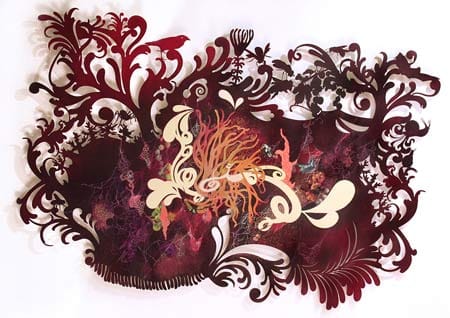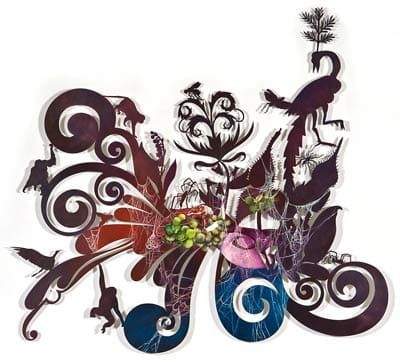by The Editors
“Abortion is a matter of the heart,” the late Dr. George Tiller once said. “For until we understand the heart of a woman, nothing else about abortion makes any sense at all.”
Abortion care has been a legal health service in New York State for 40 years now. In fact, the provision of abortion in New York predates the 39-year-old U.S. Supreme Court decision in Roe v. Wade on January 22, 1973, in which the court overturned state criminal abortion bans.
A lot has happened since then.
For this special edition of On The Issues Magazine, ABORTION is our topic of discussion. We invited leading writers, thinkers, artists and commentators to look at abortion – boldly, unapologetically, prophetically. As a result, we are publishing our largest online edition to date, featuring a plethora of ideas, insights and exchanges.
To start things off, publisher and editor-in-chief Merle Hoffman offers an excerpt from her newly released memoir, Intimate Wars: The Life and Times of the Woman Who Brought Abortion from the Back Alley to the Board Room (The Feminist Press). In the selection here, Where the Reality of Abortion Resides, Hoffman recounts holding the hands of abortion patients as the director of a women’s clinic and hearing their whispered explanations, often laced with refrains of “if only.”
“If only” also may be the mantra of the reproductive justice movement. “If only” the Supreme Court had decided Roe based on equality of rights and not a right to privacy. “If only” the movement had stopped the Hyde Amendment in 1976, which, year after year, has blocked federal funding for abortions of economically disadvantaged women. “If only …”
Where Are We Going: Reality Today
Today, we live with another reality: abortion rights, access, affordability and delivery options are all imperiled in the U.S. In this edition of On The Issues Magazine, several writers offer unique perspectives on what the movement for reproductive freedom needs to be doing and considering now.
Lori Adelman sets the stage by creating a picture of abortion patients and how they have changed since abortion became legal in the U.S. in Occupying the Waiting Room: 40 Years of Health Care Needs; she also looks at the shift in technology with “pill” abortions.
Author and commentator Carole Joffe, in Gone Too Far? Reproductive Politics in the Time of Obama, argues that unexpectedly tough times in a Democratic administration have primed people to fight back, while Gloria Feldt warns pro-choice activists not to waste time on trying to appease an opposition steeped in partriarchy and absolutism in The Grand Folly of Focusing on “Common Ground”.
Ayesha Chatterjee and Judy Norsigian of Our Bodies Ourselves ask us to expand our circles of outreach in Can We Choose to Move Forward on Reproductive Justice? — And How?, and Amanda Marcotte urges the mainstream reproductive justice organizations to do more to bolster the work of online supporters, writers and activists in Helping Bloggers To Help: Tips for Reproductive Health Organizations. Jasmine Burnett asks African American gay and lesbian organizations to show more solidarity with women in Calling Black LGBTQ Institutions: Where Are You? Where is Reproductive Justice?. And Mary Lou Greenberg describes the impressive extracurricular efforts of medical students to secure training in abortion care in Next Generation Access: Medical Students Fill A Void.
Legal tangles and developing concerns prime the attention of several writers. Priscilla Smith, the last pro-choice lawyer to argue before the U.S. Supreme Court, suggests a fresh approach to abortion litigation in An Abortion Miracle? Let’s Try the First Amendment. Attorney Corinne A. Carey alerts patients and providers alike to a truly underreported 21st century concern – the sharing of electronic medical records and what it means for abortion care. Much more regulation is needed to protect confidentiality, she warns in Privacy at Stake: Patients, Clinics and Electronic Medical Records. Aram A. Schevey scoffs at the latest proposal in Washington D.C. — a bill that would send doctors to prison if an abortion patient’s motivation were based on the race or gender of the fetus — in Redefining Chutzpah: More Bad Ideas to Burden Women, while Margie Kelly challenges “pro-lifers” who elevate fetal life to demand stricter environmental regulation to prevent toxic harm in the womb in Glorifying the Fetus While Ignoring the Fetal Environment.
Using Our Voices to Address Unrelenting Opposition
The deceit and viciousness of the anti-abortion movement in the past 40 years are underscored by several writers. Kathryn Joyce uncorks the latest anti-abortion tactic of deploying a sincere-seeming young woman to create sneaky fake videos and deliver virulent anti-abortion messages in Lila Rose: A Sweet Face to Accompany Extreme Anti-Abortion Claims. Eleanor Bader reminds us in Anti-Abortion Harassment and Violence Still Stifle Access that extremist danger is still with us. Only two and a half years have passed since Dr. Tiller was assassinated in Kansas, and, she explains, harassment continues of new targets — including an 11-year-old girl in Maryland. Carol Mason deconstructs the distortions of a slick anti-abortion film, 180 in What To Do When They Say Holocaust.
What propelled and will save reproductive rights is, and always has been, the active engagement of women and men in promoting and protecting their rights – in short, activism. In As Access Slides, Feminists Must Begin to “Extract” From Our Self-Help Past, abortion rights pioneer Carol Downer describes the excitement of the 1960s women’s liberation movement and why an emboldened revival is needed. Jeannie Ludlow goes back even further in Reframing Compassionate Care: Of Madame Restell and Other Outlaws, sharing lessons learned from those who offered women’s “remedies” even when it was illegal. In a personal essay, Justine Goodman finds a new understanding of second wavers’ fights for autonomy and freedom after interviewing her mother, Judge Emily Jane Goodman, who, as a young lawyer, took a sometimes-startling legal stance in the effort to overturn then-existing abortion bans, in Before “Roe”: Legal Battles, Involuntary Servitude, My Mom.
Barbara Santee brilliantly shares her experience and advice over 50 years in Letter to a Young Activist: Don’t Drop the Banner, with a cry to upcoming generations to make a lifelong commitment to preserving women’s rights. Young activist Sarah Erdreich responds with How Anti-Abortion Protesters Got Me: Letter from a Young Activist, describing what pushes her activist buttons and keeps her going.
Other writers illuminate how film, theater and literature are making the voices for reproductive freedom heard. Faith Pennick, in “Silent Choices”: African American Women Open Up on Film, talks candidly about her several-year quest to respond to a friend’s dismissive remark about the importance of abortion to Black women, and Jennifer Baumgardner writes about the controversy generated in making a T-shirt with a simple statement for women who do not, in fact, regret their abortions in We’re Not Sorry. Still. Alexis Greene writes in The Power of Theater: “Words of Choice” Touches Hearts about the touring group that uses a social justice mission to open conversations about reproductive freedom, and Susan Elizabeth Davis describes her journey from pro-choice activist to pro-choice novelist in “Love Means Second Chances”: Reproductive Freedom in a Novel.
Several writers give wonderful sideways glances to misogyny, patriarchy, stereotyping and abortion. Andrea Plaid, in Heading Toward Menopause, Still Caring about Abortion, explains why she, a Black woman counting the days to hot flashes, still doesn’t want children and supports abortion rights, while satirist Susie Day pops up a memo from Mary in heaven about dropping the patriarchy in Same Old Dilemma, or the Virgin Rebirth. Cartoonist Matt Bors wonders about the possibilities in mixing and matching fetal personhood and corporate personhood in LLZ, and poet Marge Piercy skewers the anti-abortion view of the post-fetal person in Ethics for Republican.
As always, On The Issues Magazine includes art and poetry. Poetry co-editor Sarah Browning presents in The Poet’s Eye a rich selection of five poets who write about abortion and find images for tender moments of give and take: Judith Arcana, Sonya Renee Taylor, Johnna Schmidt, Melissa Tuckey and Katherine Anderson Howell. Art Editor Linda Stein features Ursula O’Farrell, a California-based painter who expresses the inner struggles of women to reach empowerment, in The Art Perspective. Ria Sen and The Feminist Press recommend of six books (among many) that can help readers further extend their knowledge about abortion rights, history and activism in Sharing the Wealth of Knowledge on Abortion.
Our archives from both our print (1983-1999) and online (2008-present) magazine editions are available on our site – and, as a public service, are completely free. We’ve excerpted some classics in RELATED STORIES: Bold Discussions of Abortion in On The Issues Magazine, and others can be found in the Complete Table of Contents, Abortion.
In a newer feature, the Student Think Tank, which publishes student commentary, Kristine Kordell writes about lesbian military history in response to our on edition, Women, War and Peace.
We invite your participation, too — with our comment feature at the end of every story, submissions to our unique Café section, which carries frequent updates and additional perspectives ([email protected]) or letters to the editor.
And we hope you’ll share this rich repository of material with your friends and colleagues. Find us on Facebook and Twitter. For this edition, we’re using the hashtag #abortion, so add it to your tweets!
We look forward to hearing your thoughts.
~The Editors
Also see “Where the Reality of Abortion Resides” by Merle Hoffman in this edition of On The Issues Magazine.
See RELATED STORIES: Bold Discussions of Abortion in On The Issues Magazine in this edition of On The Issues Magazine.
Read the Cafe for new and updated stories.




